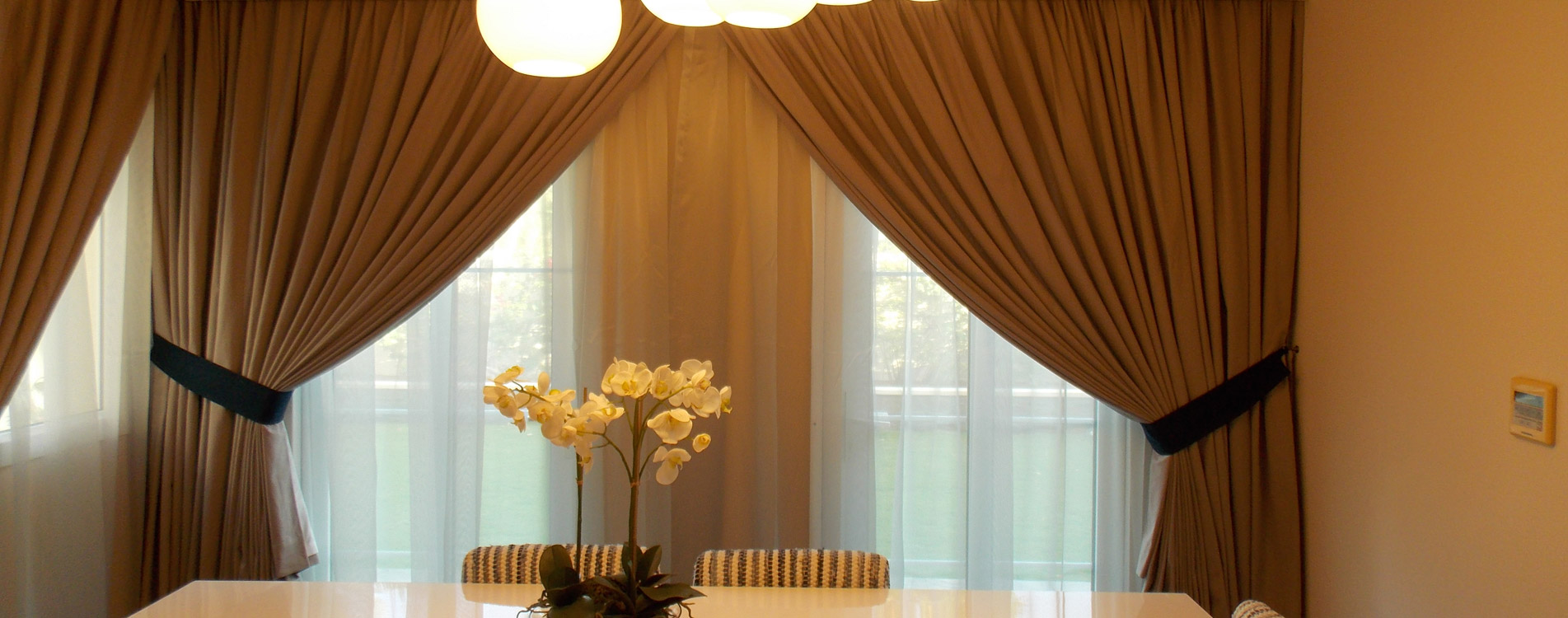
Have you ever wondered how curtains and drapes were discovered? With our vision to continuously be of service to our valued clients, we have come to terms to educate and inform everyone about the true beauty of customized curtains and drapes. I have complied here some interesting facts about the history of curtains and drapes as well as other information that will help you choose the most appropriate fabric material for your curtain and drape making project.
Shall we head on with them and learn new ideas along the process…
Brief historical background of Curtains and Drapes
Did you know that the discovery of the use of curtains and drapes started early during the 2nd to 6th century wherein they are usually hung on poles across arches. In fact the proof that curtains and drapes existed were from the excavation efforts performed in the sites of Olynthus, Pompeii and Herculaneum where curtains and drapes are used as room dividers.
The very first material used to create drapes is from hides of animals and used as main covering for doorways. Later, in ancient Egypt, the curtain and drape fabrics are either flax or linen, eventually leading to the use of cotton, silk and wool.
In England, it was only in the latter part of the 16th century that drapes were introduced. Before that period, people favor more the use of wooden shutters to shield of the light coming from the sun or chills from the wind or cold weather. The inspiration of the use of curtains and drapes rooted from a piece of fabric that was placed on an iron pole with iron rings pulling them on the other side of the window.
During the 17th century the English people only see drapes from houses of well-known families showcasing their lavish and grand way of living. It was only in the 18th century that plain curtains were often used on window frames.
In 19th century, curtains were used in pairs and placed on posts adorned with rosettes and laurel wreaths. Later in 1990 with the evolution of advanced technologies in the textile business industry, curtains and drapes were used not only by wealthy families, but also the working class for decorating their windows.
Materials suitable for Curtain and Drape Making
Materials used to produce fabrics ideal for curtain and drape making usually come from animals, man-made fabric or plants such as vegetables. Below are the common types of fabric material perfect for curtains and drapes production:
- Cotton
This is the most common type of fabric material favored by curtain maker specialists and interior designers because it has moderate to light weight, not expensive yet managed to produce a striking or powerful effect on any window type, regardless of the window size or length.
- Gingham
Another type of cotton fabric that is lightweight in built is Gingham. It comes in woven checked design, usually made from a combination of two thread colors. The Gingham fabric material is commonly used as kitchen curtain, but nowadays, this fabric is also used as curtain material for the other parts of the house such as living room, dining room and bedroom.
- Glazed
The other name for Glazed cotton is “Chintz”. Its name originated from Indian chintz prints. This fabric material boasts of glossy finish and is perfect for drape making in any room. Chintz is made from lightweight cotton material and carefully woven with dyes and glazing. Glazing comes in two forms, the light and heavy glazing. The glossy effect is achieved through heavy glazing while lighter glazing produces soft sheen finish.
- Easy-care cotton
This is another type of cotton fabric material, easy-care and it simply means easy to manage and wash. The general appearance of easy-care cotton fabric is soft and sleek. Curtains and drapes made from this type of cotton fabric are favored due to their low maintenance feature as compared to other fabric made curtains and drapes.
- Satin
The most expensive type of curtains and drapes are usually made from premium quality silk material or known as pure silk. There is now a more cost-effective type of silk available, the cotton silk. It is cheaper than pure silk and a better option for buyers with minimum budget, but wish to have glossy effect curtains and drapes. Although, the final outcome will not be as shiny as the pure silk drapes, it is still a wise choice of fabric due to its durability characteristic.
Top advice:
Shopping for curtains and drapes can be quite challenging and time consuming, especially if you have different sizes of windows. If you want to get the most appealing curtains and drapes that will keep you visitors amused, get the professional services of an expert curtain maker. Why? It’s plain and simple, their expertise in making personalized curtains has been proven for a good number of years, satisfying the different tastes of clients, plus they have the right curtain tools, design ideas and professionalism to deliver the best curtains and drapes a client is looking for.